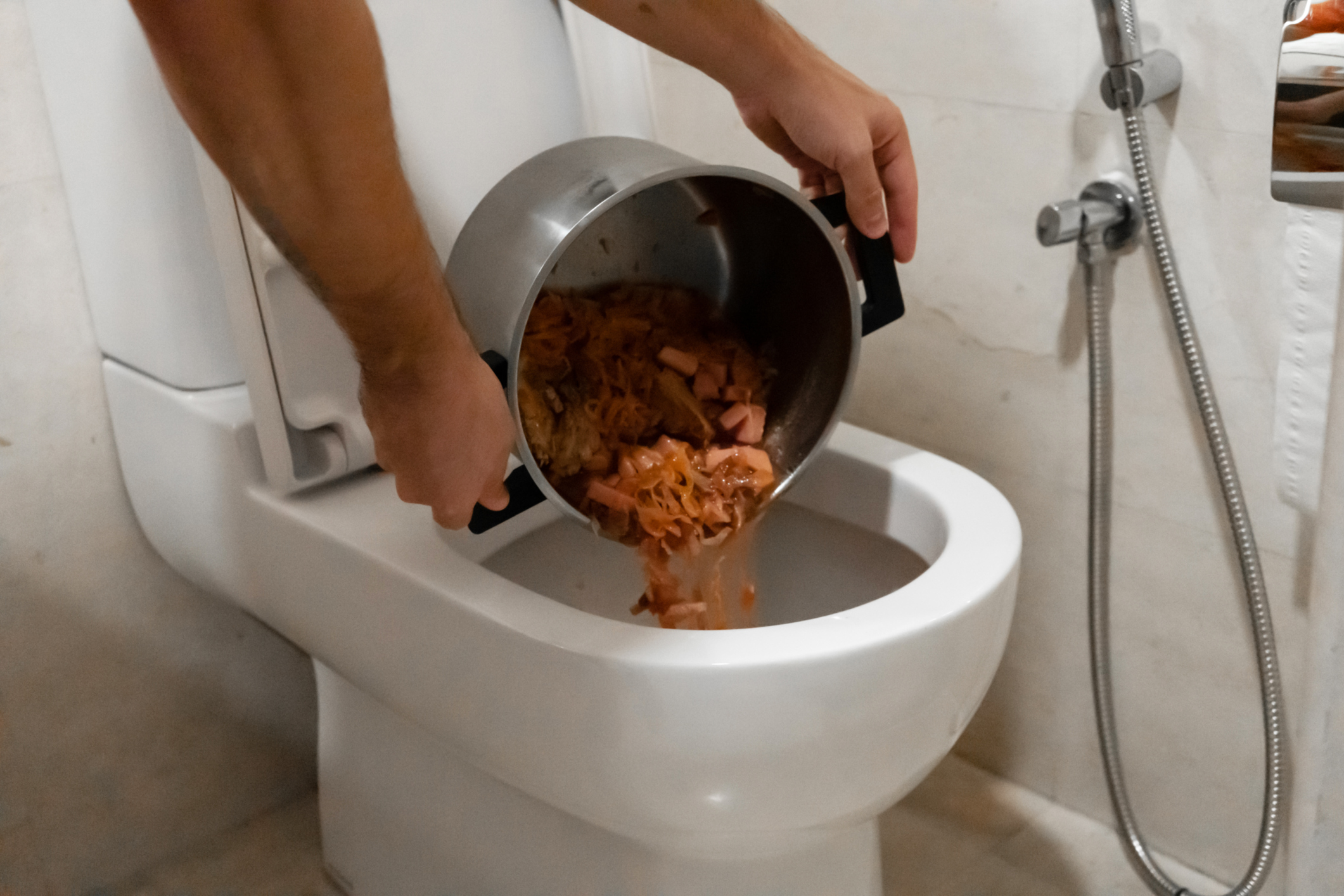Is it Sensible to Flush Food in the Toilet?
Is it Sensible to Flush Food in the Toilet?
Blog Article
What're your ideas regarding What Can Happen If You Flush Food Down the Toilet??

Introduction
Many people are frequently faced with the dilemma of what to do with food waste, particularly when it involves leftovers or scraps. One common concern that emerges is whether it's okay to purge food down the toilet. In this article, we'll look into the reasons why individuals might take into consideration purging food, the consequences of doing so, and alternate methods for appropriate disposal.
Reasons why individuals may take into consideration flushing food
Absence of recognition
Some individuals might not be aware of the possible injury triggered by purging food down the toilet. They might wrongly think that it's a harmless technique.
Benefit
Purging food down the bathroom may look like a fast and very easy option to dealing with undesirable scraps, particularly when there's no close-by garbage can available.
Negligence
Sometimes, people may simply pick to flush food out of sheer laziness, without thinking about the effects of their activities.
Effects of flushing food down the toilet
Environmental influence
Food waste that ends up in waterways can contribute to pollution and injury aquatic communities. In addition, the water made use of to purge food can stress water resources.
Plumbing issues
Flushing food can result in stopped up pipelines and drains, creating pricey pipes repair services and aggravations.
Kinds of food that should not be purged
Coarse foods
Foods with coarse textures such as celery or corn husks can obtain entangled in pipes and trigger blockages.
Starchy foods
Starchy foods like pasta and rice can take in water and swell, leading to obstructions in pipelines.
Oils and fats
Greasy foods like bacon or cooking oils should never ever be flushed down the toilet as they can strengthen and trigger blockages.
Appropriate disposal techniques for food waste
Utilizing a waste disposal unit
For homes outfitted with garbage disposals, food scraps can be ground up and flushed via the plumbing system. Nonetheless, not all foods are suitable for disposal in this way.
Recycling
Certain food packaging materials can be recycled, decreasing waste and minimizing environmental effect.
Composting
Composting is an environmentally friendly means to get rid of food waste. Organic materials can be composted and used to improve soil for horticulture.
The significance of appropriate waste management
Decreasing environmental harm
Proper waste monitoring techniques, such as composting and recycling, aid minimize air pollution and maintain natural resources for future generations.
Securing pipes systems
By avoiding the method of flushing food down the bathroom, property owners can avoid pricey plumbing repair work and keep the integrity of their plumbing systems.
Conclusion
To conclude, while it might be alluring to flush food down the bathroom for benefit, it is necessary to recognize the possible effects of this activity. By taking on correct waste administration methods and throwing away food waste properly, people can add to healthier plumbing systems and a cleaner environment for all.
FLUSH FOOD DOWN THE TOILET?
FLUSHING FOOD CAN CAUSE BLOCKED DRAINS IN YOUR HOME
All of the plumbing fixtures in your home are connected to the same sewer pipe outside of your home. This outdoor sewer pipe is responsible for transporting all the wastewater from your home to the Council sewer mains. Even small pieces of food that go down the kitchen sink can cause problems for your sewer. It should therefore be obvious that flushing larger bits of food, such as meat, risks a clog in either the toilet itself or the sewer pipes. Flushing greasy food is even more problematic because oil coagulates when it cools, coating the interior lining of your pipes.
THE TOILET IS NOT A BIN
Food isn’t the only thing that people shouldn’t be flushing down the toilet. People use the toilet to dispose of all kinds of things such as tampons, makeup wipes, dental floss, kitty litter and even underwear. Water goes to great lengths to educate residents about the high costs and stress placed on wastewater treatment systems simply from people flushing the wrong stuff down the toilet. It costs taxpayers millions of dollars each year, and homeowners thousands in blocked drain repairs.
FLUSHING FOOD IS A WASTE OF WATER
Flushing food is a waste of our most precious resource - water. In June this year Level 1 water restrictions were introduced to protect water supply from drought conditions. Much of New South Wales continues to be affected by prolonged drought with recent figures revealing up to 97 per cent of the state remains in drought. Depending on whether you have a single or dual flush toilet, every single flush uses between five and 11 litres of water. In the current climate this is a huge amount of water to be wasting on flushing food that should be placed in the bin (or better yet, the compost).
https://www.jabplumbingsolutions.com.au/blog/can-you-flush-food-down-the-toilet

Do you really like more info about What Can Happen If You Flush Food Down the Toilet?? Post feedback directly below. We'd be pleased to know your opinions about this content. We hope to see you back again soon. Sharing is caring. You won't know, you may very well be doing someone a favor. I am grateful for being here. Please pay a visit to our site back soon.
Call Today Report this page